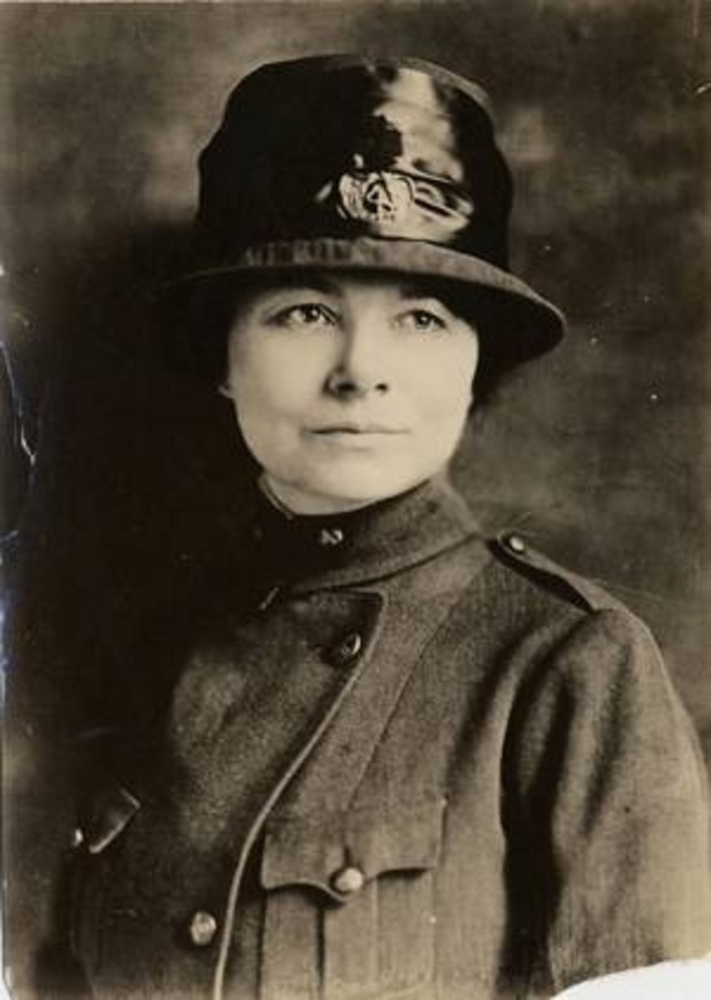Physician Esther Clayson Pohl Lovejoy took an active and significant role in public health reform, suffrage, and politics in early twentieth century Portland. Lessons she learned in Oregon became the foundation for her subsequent career in transnational medical relief and international health.
Esther Clayson was born in Seabeck, Washington Territory, in 1869. Her parents Edward and Annie Quinton Clayson moved the family to Portland in 1883. Esther enrolled at the Medical Department of the University of Oregon in 1890 and earned tuition money by clerking at department stores. She graduated in April 1894 with the H.A. Wall Prize and three weeks later married Emil Pohl, her medical school colleague. After their son Frederick was born in 1901, Esther’s mother came to assist with child care in the family’s East Portland home. Frederick died in September 1908, and Emil died in May 1911. In 1912, Esther married Portland businessman George A. Lovejoy; they divorced in 1920.
Portland Mayor Harry Lane, M.D., appointed Esther Pohl to Portland’s city health board in 1905. She served as the city health officer from 1907 to 1909, the first woman to hold such a position in a major U.S. city. Pohl believed that healthy communities were an important responsibility of citizens and their government. She prevented an outbreak of bubonic plague in 1907-1908 and brought national public health priorities to Portland by working for pure food and milk, improved collection of garbage, and inspection of school children for communicable disease. During her tenure, she built important coalitions for action with the Portland Woman’s Club, the Council of Jewish Women, the Consumers' League, and other civic groups.
Pohl Lovejoy brought these important skills to her work for woman suffrage in the Oregon campaigns of 1906 and 1912. She emphasized the need for women to have the vote to make their homes and cities healthy. Her working friendship with National American Woman Suffrage Association President Anna Howard Shaw contributed to strategic networking on a national scale.
In the 1912 campaign, Lovejoy worked as a speaker and organizer across Portland’s twenty-three suffrage groups and founded Everybody’s Equal Suffrage League. After Oregon women achieved the vote in 1912, Lovejoy continued to serve as Oregon’s representative to the national organization until the passage of the Nineteenth Amendment in 1920. She ran for a seat in the U.S. Congress in 1920 as the Democratic candidate from Portland’s Third District but did not unseat Republican C. N. McArthur.
During World War I, Lovejoy went to France as a representative of American women’s organizations to study the public health needs of women and children in devastated areas. She became the first president of the Medical Women's International Association (1919-1924). She directed the American Women’s Hospitals, an international relief organization, from 1919 until her death in 1967, with service in twenty-eight nations.
A historian of women in medicine, Lovejoy published four histories, including the comprehensive Women Doctors of the World (1957). Her Oregon experience with suffrage, politics, and public health contributed to her successful work with medical women and communities on an international scale to promote international health.
-
-
Lovejoy, Esther, 1907, Portland City Health Office, OHSU.
Esther Pohl Lovejoy and staff of the Portland Health Dept., 1907. Oreg. Health & Science Univ. Historical Coll. & Archives Esther Pohl Lovejoy Coll., 2001-011
-
![Esther Pohl Lovejoy signing her book, Women Doctors of the World, about 1957.]()
Lovejoy, Esther, signing book.
Esther Pohl Lovejoy signing her book, Women Doctors of the World, about 1957. Oreg. Health & Science Univ. Historical Coll. & Archives Esther Pohl Lovejoy Coll., 2001-011
-
![Esther Pohl Lovejoy at a meeting of the alumni of University of Oregon Medical School, 1957.]()
Lovejoy, Esther, UOMS alums, 1957, crop.
Esther Pohl Lovejoy at a meeting of the alumni of University of Oregon Medical School, 1957. Oreg. Health & Science Univ. Historical Coll. & Archives Esther Pohl Lovejoy Coll., 2001-011
Related Entries
-
Harry Lane (1855-1917)
Harry Lane epitomized the spirit and activism of Oregon’s progressive r…
-
Woman Suffrage in Oregon
The campaign to achieve voting rights (also called suffrage or the fran…
Map This on the Oregon History WayFinder
The Oregon History Wayfinder is an interactive map that identifies significant places, people, and events in Oregon history.
Further Reading
Jensen, Kimberly. “‘Neither Head nor Tail to the Campaign’: Esther Pohl Lovejoy and the Oregon Woman Suffrage Victory of 1912.” Oregon Historical Quarterly 108:3 (Fall 2007): 350-83.
Jensen, Kimberly. “Esther Pohl Lovejoy, M.D., the First World War, and a Feminist Critique of Wartime Violence.” in The Women’s Movement in Wartime: International Perspectives 1914-19. Edited by Alison Fell and Ingrid Sharp. (London: Palgrave Macmillan, 2007): 175-93.
Lovejoy, Esther C.P. “My Medical School, 1890-1894.” Oregon Historical Quarterly 75:1 (March 1974): 7-35.
Lovejoy, Esther Pohl. Women Doctors of the World. New York: Macmillan, 1957.





